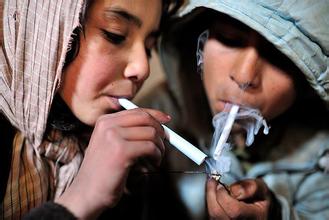Asia: Afghan Highs
亞洲:阿富汗,毒品新高
As violence surges in Afghanistan, so too does the country's opium business.
隨著暴力事件在阿富汗劇增,這里的鴉片生意也蒸蒸日上。
Last year was the deadliest year ever for non-combatants, with nearly 3,700 killed.
去年那些不上戰場的人中有將近3700人因此喪生,死亡人數空前。
In its latest World Drug Report, the UN says it was also a record year for the area of farmland used to grow opium: 224,000 hectares, which produced 85% of the world's opium and 77% of its heroin.
在最近世界毒品報告中,聯合國稱用于種植鴉片的農田面積達到新高:224000公頃的土地提供了世界上85%的鴉片和77%的海洛因。

When cocaine production was at its peak in Colombia in the 1980s, drugs produced 6% of that country's income.
在20世紀80年代可卡因在哥倫比亞泛濫成災時,毒品竟然占到國民收入的6%。
In Afghanistan, they generate at least 15%.
在阿富汗,至少占到15%。
The business thrives on the lawlessness of conflict, which has escalated in Afghanistan along with the withdrawal of a large part of the American-led international forces.
這個生意之所以紅火是因為在打擊中無法可依,加上美國主導的國際刑警組織撤退造成在阿富汗地區斗爭不斷升級。
Large-scale poppy-growers often use their connections to keep prying officials at bay.
大規模的罌粟種植者經常利用關系使臥底警察陷入困境。
Eradication efforts thus mainly target poorer farmers.
這樣一來貧窮農民主要是根除力量的打擊對象。
That risks making the violence worse.
這種風險讓暴力不斷惡化。
Desperate farmers stripped of their livelihoods may turn to the Taliban.
使得溫飽不濟而又絕望的農民可能轉而投身塔利班。
譯文編自AuroraW











